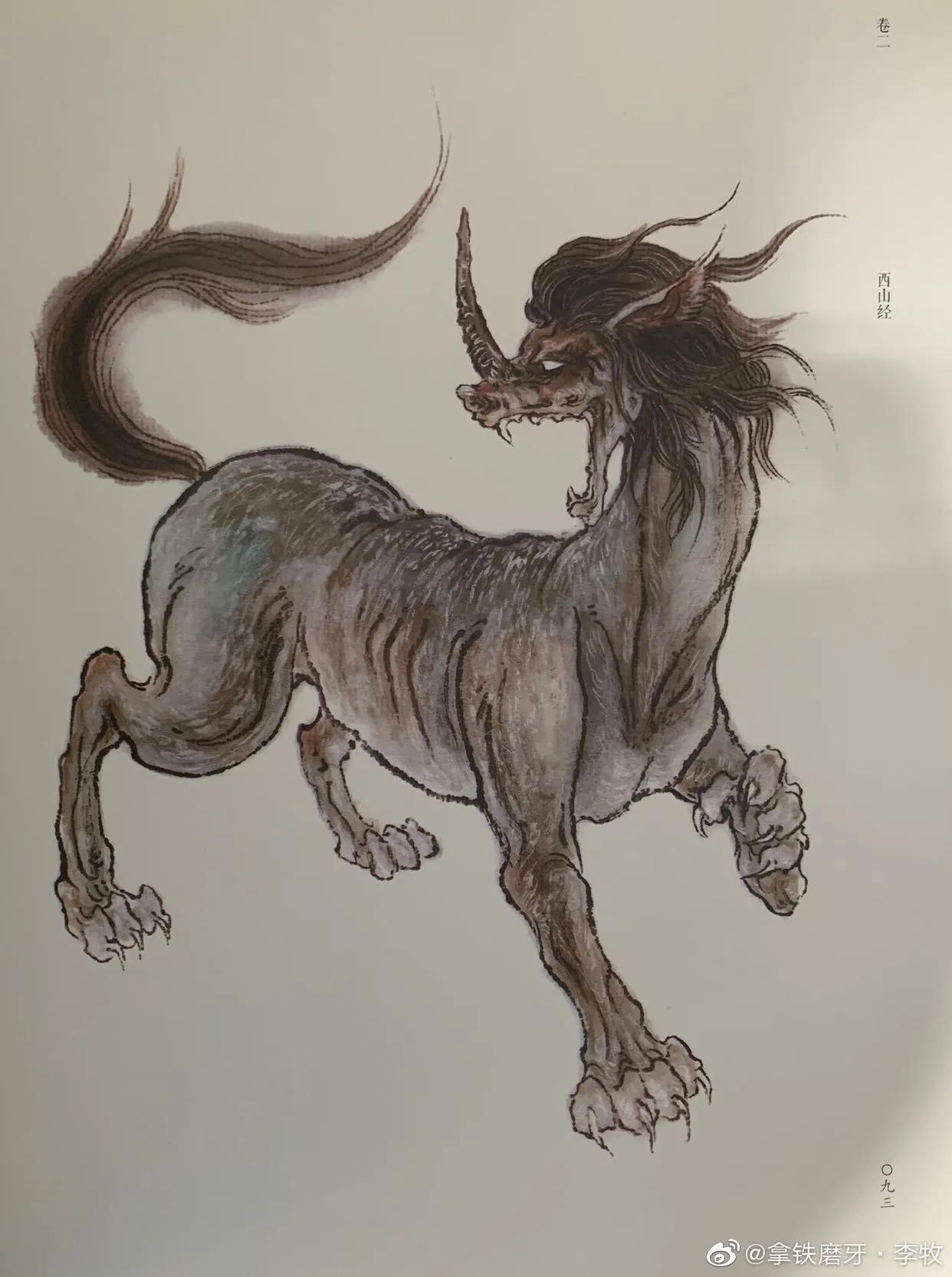The Classic of Mountains and Seas is the internal combustion engine of Chinese philosophical enlightenment, and it is not a pure mythological existence.
Illustrations are shown as for Sugizawa's "Watching mountains and seas".
The road map shows Xu Ke's vernacular color map "Classic of Mountains and Seas".

駮
note
<h1 class="pgc-h-arrow-right" > vernacular:</h1>
Three hundred miles to the west of Yingju Mountain, there is a mountain named Zhongqu Mountain, which is rich in jade on the yang side of the mountain, and the yellow, white jade and metal minerals on the yin side of the mountain.
There is a beast in the mountains, shaped like an ordinary horse but with a white body and a black tail, with a horn, the teeth and claws of the tiger, the sound is like the sound of a drum, its name is 駮, it can eat tigers and leopards, and its owner can resist the damage of weapons.
<h1 class="pgc-h-arrow-right" data-track="73" >note:</h1>
Yin: In ancient times, carrying the sun on your back was called yin, representing the north.
駮: pronounced bó.
Drums: The sound of drumming.
<h1 class="pgc-h-arrow-right" >:</h1>
The Classic of Mountains and Seas records: "It is a tiger and leopard eater, and it can be used as a soldier." ”。
It is said that this divine beast can eat tigers and leopards.
.
King of the Forest - Attacks the direction and suppresses all dark forces.
The expression of 駮 in different periods of the Ming and Qing dynasties varied, as shown in the following figure:
[Ming, Qing] 駮圖本
Comparatively speaking:
Hu Ben's sword is directly painted with tiger feet, representing the ferocity of the horse.
Wang Ben's body, without the body of a horse, but appears to be more robust.
Jiang Ben's scavenger became a hornless beast, more like a hunting dog.
<h1 class="pgc-h-arrow-right" > Legend:</h1>
Qi Huangong rode around on horseback, and was greeted by a tiger, and the tiger not only did not pounce on it, but instead lay in place and did not dare to move.
Later, Qi Huangong asked Guan Zhong to learn that the horse he was riding was a horse.
《宋史》也记载,“顺州山中有种奇怪的神兽,样子像马,却能吃虎豹。 ”。
当地人就请教北宋当时有名的史学家刘敞,根据他对《山海经》和管子的书得知此神兽就是駮。
<h1 class= "pgc-h-arrow-right" > a similar artifact:</h1>
Excavated in 1955 in Licun, YuXian County, Shaanxi Province, the Bronze Juzun is a wine vessel from the Western Zhou Dynasty and is housed in the National Museum of China.
䗍: Pronounced, lí. 西周单公家族的惠仲盠父受到周王赏赐了两匹马驹后,在其文考中为歌颂周王的美德,纪念这一宠赐。 后来才有这盠青铜驹尊。
Colt
<h1 class="pgc-h-arrow-right" data-track="77" > personal inference:</h1>
The horse is a kind of horse existence, but the upper humans have given it the sacred "robe".
During the reign of Emperor Shun, Lord Gao Tao, who had the ancestor of Chinese justice, proposed the use of badger to represent justice. In ancient times, it was a completely new concept for the common people of tribal alliances.
He should be a staunch judicial enforcer. On behalf of the firm belief in judicial punishment of adultery and elimination of evil, and the desire to advocate fairness and justice in the rudimentary period of Emperor Shun's founding.
<h1 class="pgc-h-arrow-right" > In qushan:</h1>
Unknown, the specifics have yet to be examined.
It is said that it is in the territory of present-day Gansu;
It is said to be in the territory of present-day Inner Mongolia.
此山,向阳的南边盛产白玉,北面盛产雄黄,玉石、金属矿物质。
Road Map of the Four Classics of the Western Ci
Welcome to the next article:
The Classic of Mountains and Seas - Ran Relic Fish, the ancients ate its flesh, slept without nightmares and avoided murder.
Maybe you have come into contact with more Western culture or Japanese and Korean culture, but you don't know where Japanese and Korean culture comes from! Chinese civilization has a history of more than 3,900 years since the establishment of the Xia Dynasty, and Chinese culture has been even longer, that has to be counted from Fuxi and Nüwa. In the early days, the wisdom of the ancestors was like the infant of "learning to speak" to the prosperity of civilization, and every step of the world was found.
Here, the basic information of the "Classic of Mountains and Seas" is sorted out and read in the form of a short film for everyone to read.